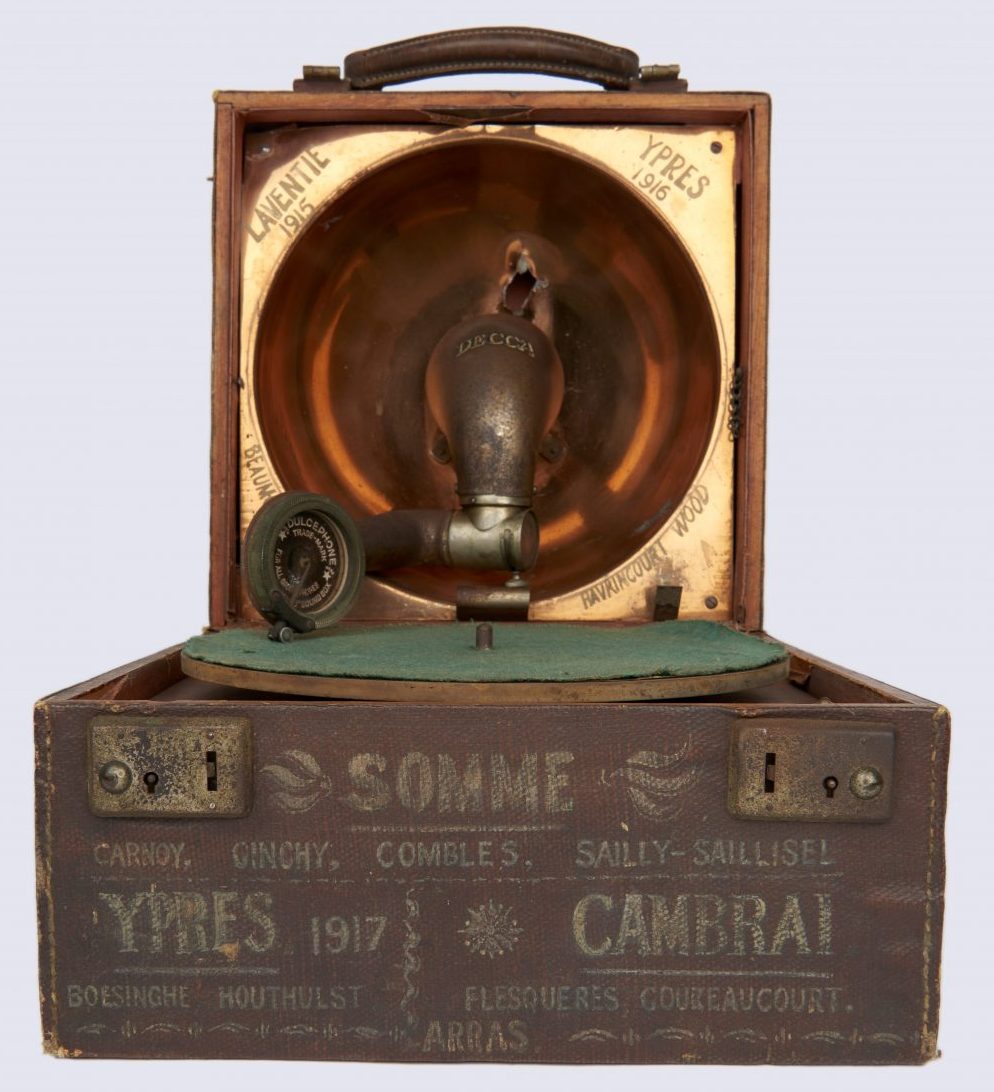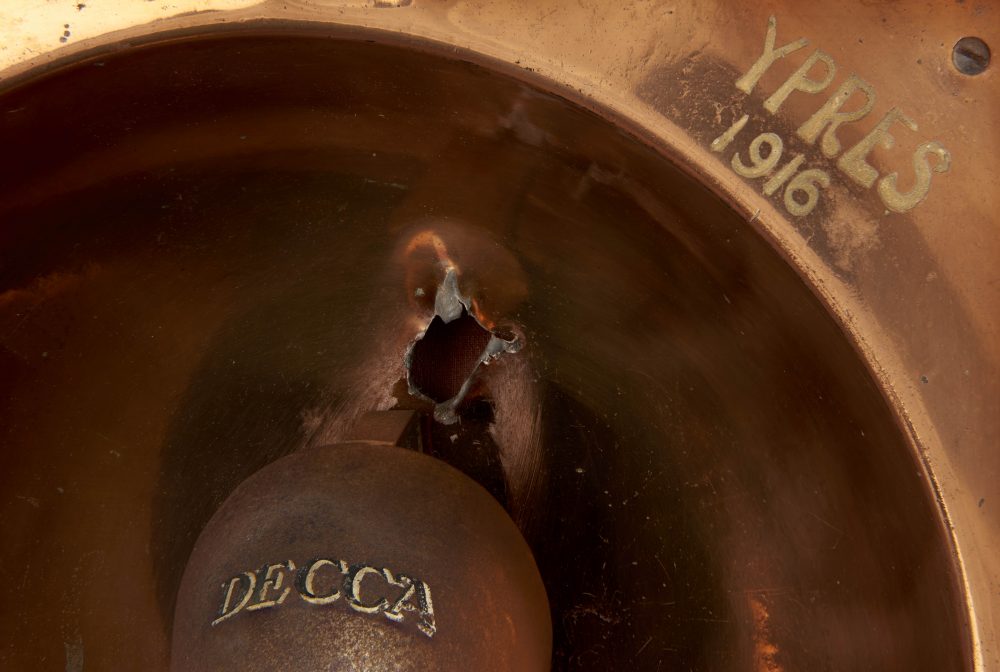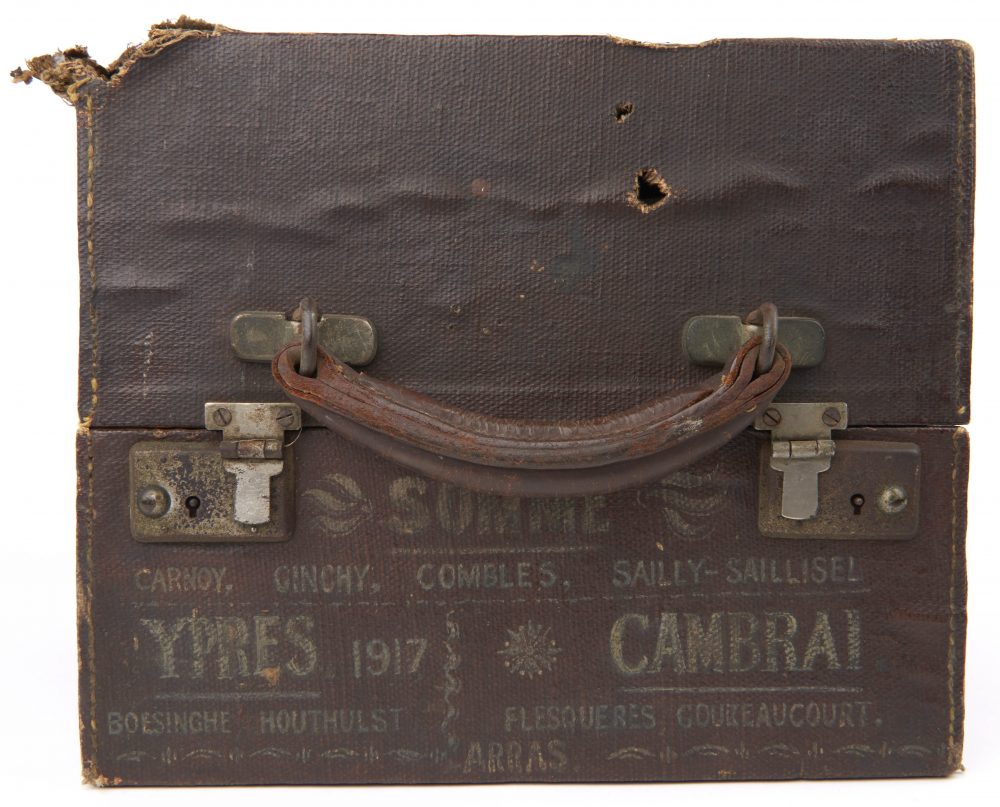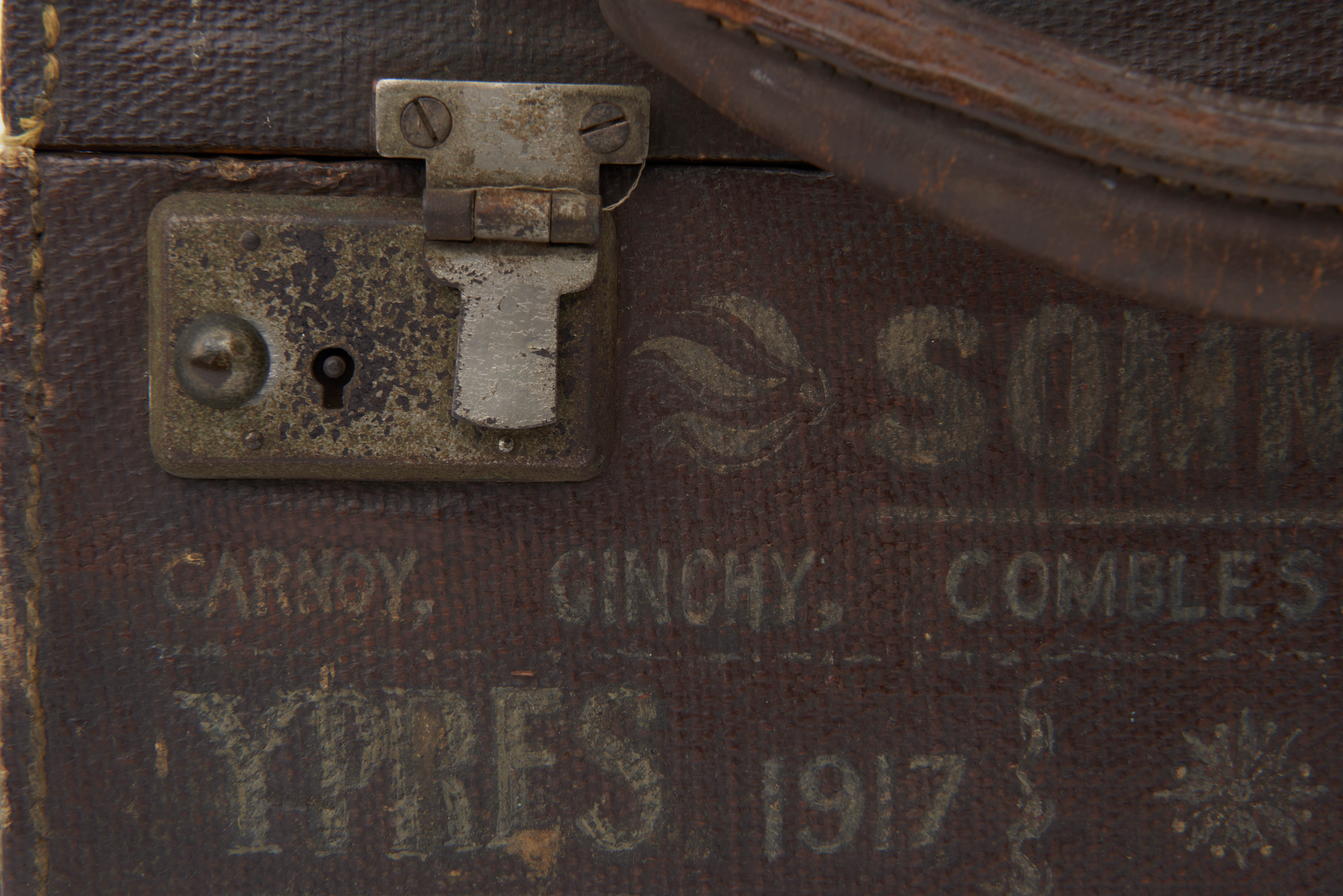
This Decca gramophone has some war stories to tell.
It was made in 1915 and after leaving the factory was taken to the Western Front. It was probably present at some of the biggest battles of the First World War between 1915 and 1918, including the Somme, Ypres (twice), Cambrai and Arras.
The Decca was the first portable gramophone assembled in England, launched in 1914 by Barnett Samuel and Sons Ltd. Around 50,000 Decca instruments were made and many of them accompanied the troops in the trenches during the Great War; it was often referred to as the ‘Trench Decca’.
This gramophone travelled over 100 miles around the Western Front between 1915 and 1918. Soldiers wrote names of battles they fought in on the case and when they ran out of space they continued writing on the bowl inside.

A bullet has passed through the bowl – which is unusually made of copper rather than the more common aluminium – but that clearly didn’t stop the troops using the gramophone and it even got a new cover afterwards.
When this gramophone arrived back to Britain, an article was written about it in trade magazine The Talking Machine News. In August 1918, the author admiringly states the war-honoured machine was still in full working order. Just a month earlier, Barnett Samuel and Sons Ltd had published an advertisement in the same magazine proudly quoting a letter from an enthusiastic soldier:
‘It was literally hit by a shell one day when playing in the mess and after we had recovered, we found the old gramophone still going strong! We had a new case made for it and it still survives though badly wounded.’

When it retired from active service a century ago, the gramophone was donated to the Imperial War Museum where it went on display in an exhibition. The Decca was loaned to the Science Museum in 1964, with the Assistant Keeper of Physics writing at the time that, ‘It is a portable gramophone and could be carried without great difficulty by public transport’.
After some conservation work was completed, the gramophone went on display at the Science Museum in 1968 for the 50th anniversary of the end of the Great War.
I’ve recently had the chance to study this incredible object as part of preparations to move much of the Science Museum Group Collection from Blythe House in London to the National Collections Centre in Wiltshire.

Handling the object I saw something on the cover that looked like dirt at first glance, but taking a closer look it resembled letters. It was hard to even see the black ink on the brown cover.
After chatting with my colleagues in the photography team, I decided to photograph the case and use photoshop to try and reveal the text.
Spending time with this object has made me wonder about the soldiers who used it. It is still hard to tell what was written on the case, but most likely it belonged to the Royal Engineers 75th Field Company which were part of the 16th (Irish) Division and present at the battles recorded on the gramophone.

